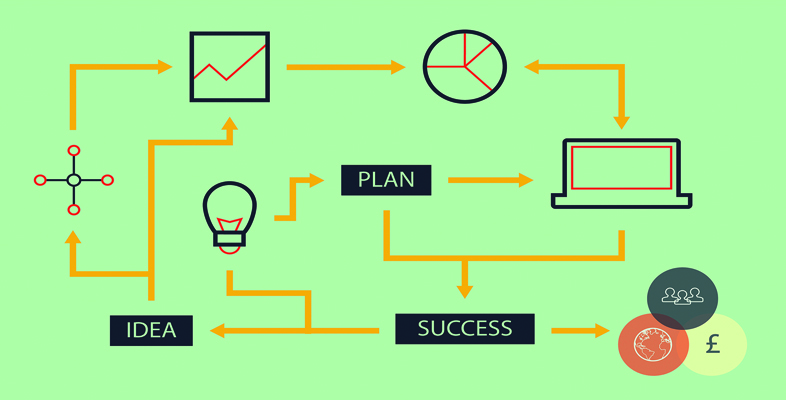5.3 Learning from mistakes
It is easy to neglect the value of learning from things that don’t work. Most of what we know about entrepreneurs and ideas comes from people who have been successful. Sometimes they might have been lucky, and being lucky is important, but more often it is hard work, and learning and recovering from lots of mistakes.
Take for example Apple. What would have happened if the learning that Apple took from their disastrous mistake of producing the early handheld touchscreen device ‘Newton’ in 1993 was that they should never develop another touchscreen mobile device?
One of the key elements of Dyson’s story is what he learnt from his idea of a ball barrow being stolen. The innovation was to replace the front wheel of a wheelbarrow with a ball making it much easier to manoeuvre. His idea, however, was stolen by a US company. This was a valuable lesson in failure to protect his idea, which he later applied to controlling production and intellectual property for future ventures (Blundel et al., 2018, pp. 248–51).
It is easier to learn from your mistakes than to discern the real lessons. People are sensitive to failure and have a real aversion to loss. This can affect your decision making if when you tried something in the past (or to use designers’ language, framed a problem or solution in a particular way) it failed. Your objectivity about whether it will work again is affected. You will often hear ‘we tried that before and it didn’t work’. Challenging this attitude can be difficult. Some design approaches, particularly from software development, champion the notion of learning from failure. ‘Move fast and break things’ or ‘fail fast’ are increasingly popular mantras.
In theory it is useful to think about how learning from and embracing failure creates something stronger, but there can be resistance to this from some quarters. Some cultures – countries or organisational ones – do not encourage failure at all. For example, the risk to reputation or the consequences of failure may be considered too high or damaging for individual careers.
Failure is not simply inconvenient for some enterprises. In particular, the social consequences for social enterprises should not be underestimated nor trivialised (UnLtd, 2016). Another example could be a failed banking app, which might mean that thousands of customers have no access to their accounts, do not get paid, and have fees applied through no fault of their own etc.
Care therefore does need to be exercised over how one learns from failure. It is the interpretation that is important. Some failures spur you on to greater things. Those at Apple didn’t ditch the idea of touchscreens. Some have instead suggested that the Newton was simply a device launched before its time and that pricing and handwriting recognition problems were more to blame (The Telegraph, 2018). Given the success of the iPhone and iPad, it is hard to argue with that view.
It is highly likely that one or more aspects of your own idea will be challenged or rejected at some point. You can choose to ignore this feedback. Or you may agree and use it to tweak or revise your idea, seeing it as a way to produce something more robust. Try not to let negative feedback cause you to falter at the first hurdle. As you carry on with the course you will see that it is not always plain sailing for any entrepreneur, including the four you are following at the moment, who will continue to share their experiences with you.

